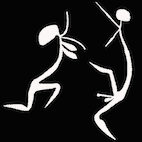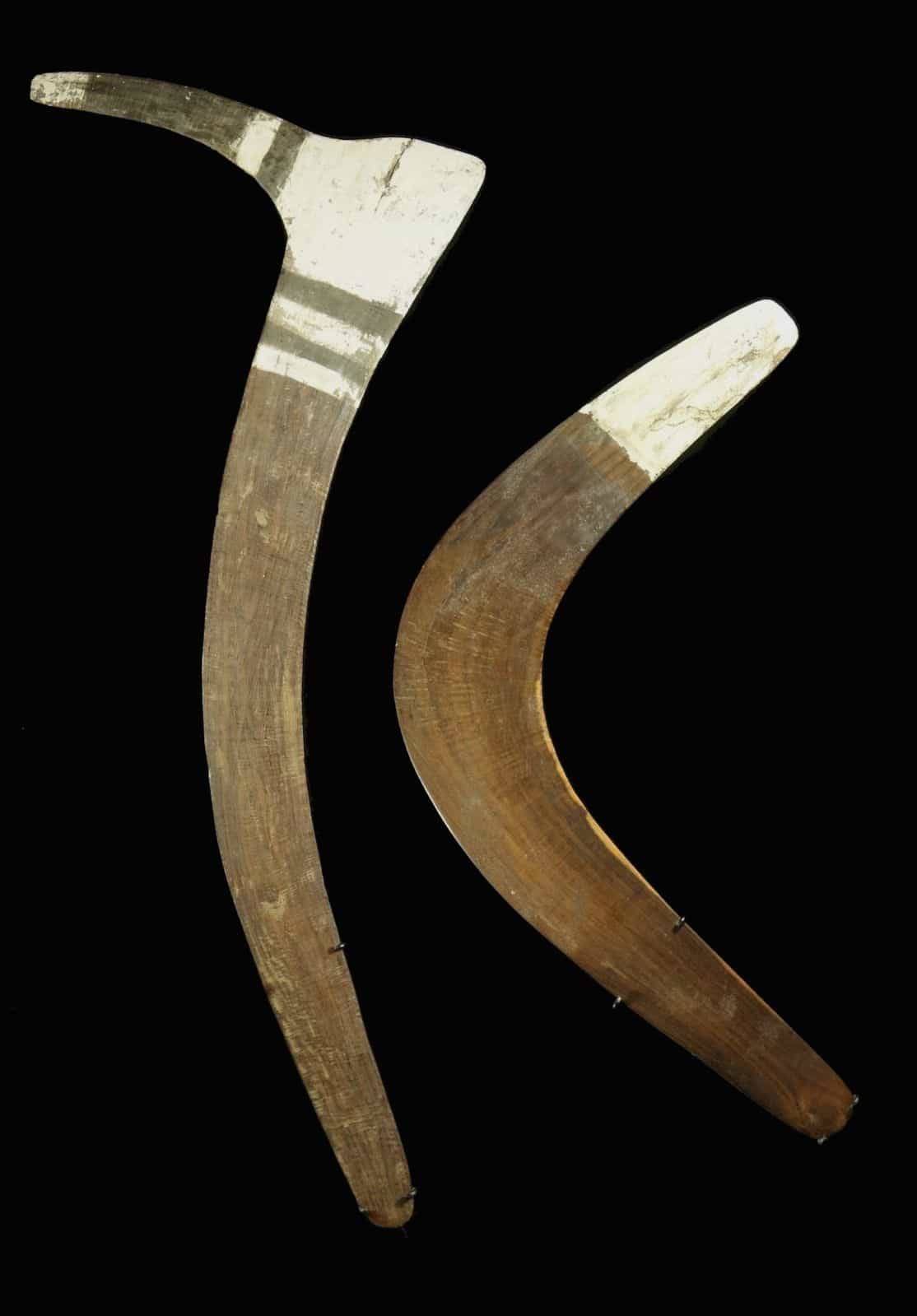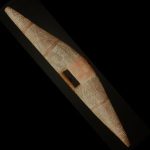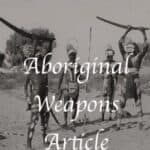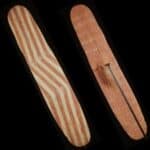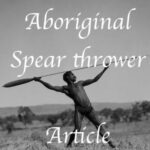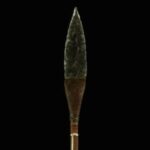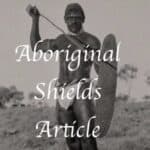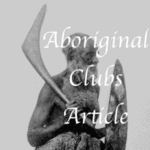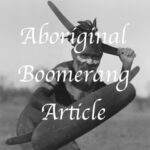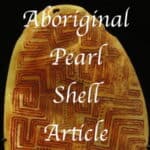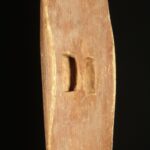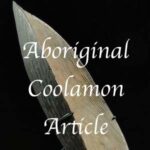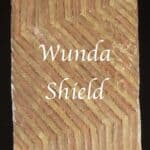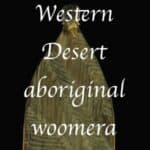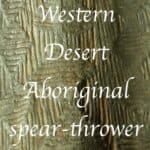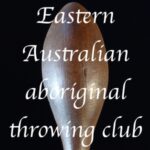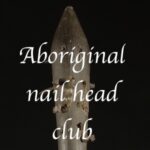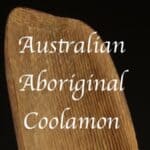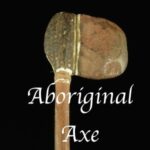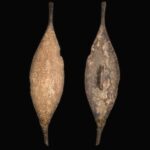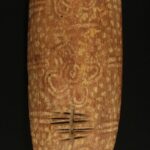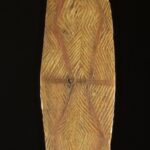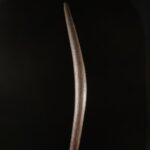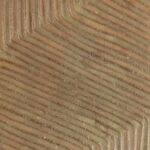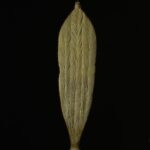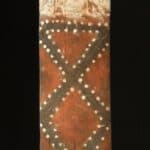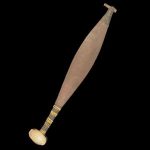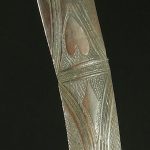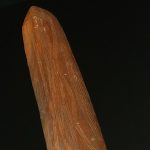Aboriginal Boomerang
The aboriginal boomerang has probably been around for at least 40,000 years. It is an iconic symbol associated with Australia. What most people do not realize is that many aboriginal boomerangs don’t come back. Only a few of the many forms of boomerang return.
The aim of this article is to look at the variety of Aboriginal boomerangs from around Australia. The boomerang is a weapon but it is also a collectible aboriginal art form.
I buy old traditional Aboriginal Boomerangs. If you want to sell an Aboriginal Boomerang please send me an image.
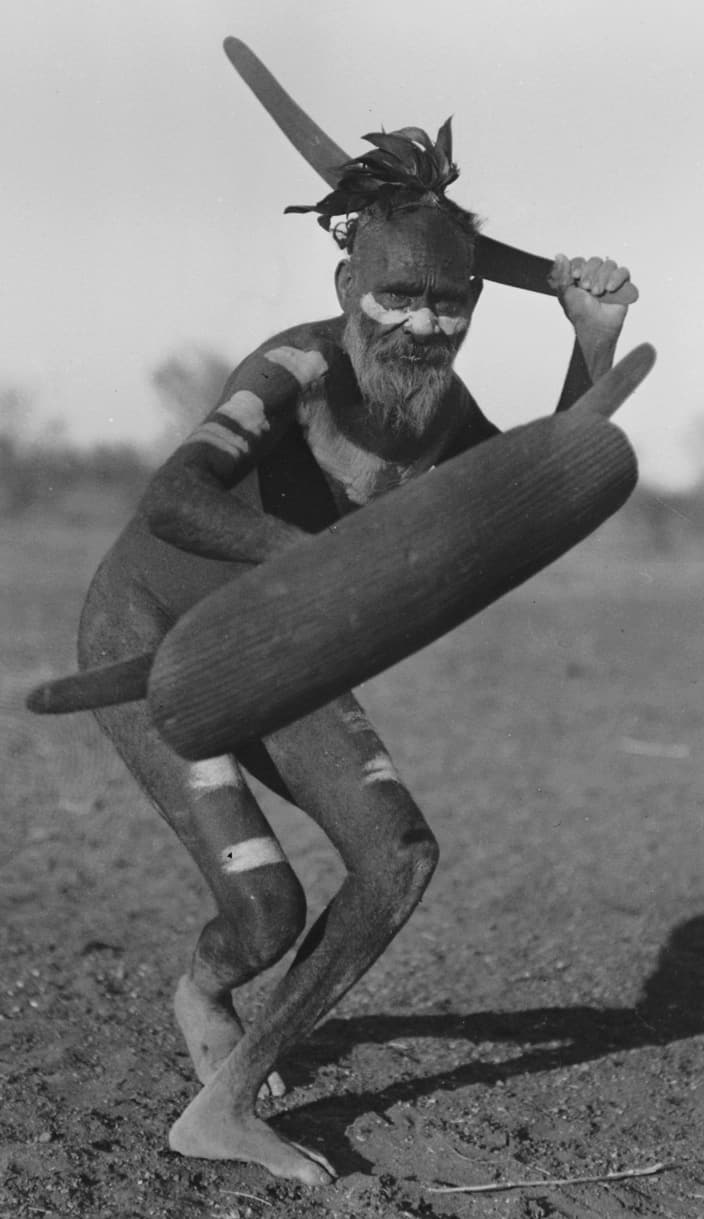
Aboriginal Boomerang Types and distribution
Incised and Decorated Boomerangs
Beautifully incised boomerangs are more collectable than plain boomerangs. Incised boomerangs were made in four main areas and they are all distinct in style.
The majority of Aboriginal boomerangs are either plain or have longitudinal fluting. Longitudinal fluting may like davits on a golf ball give it better aerodynamic properties.
Incised boomerangs often played an important role in ceremonies as well as being a weapon.
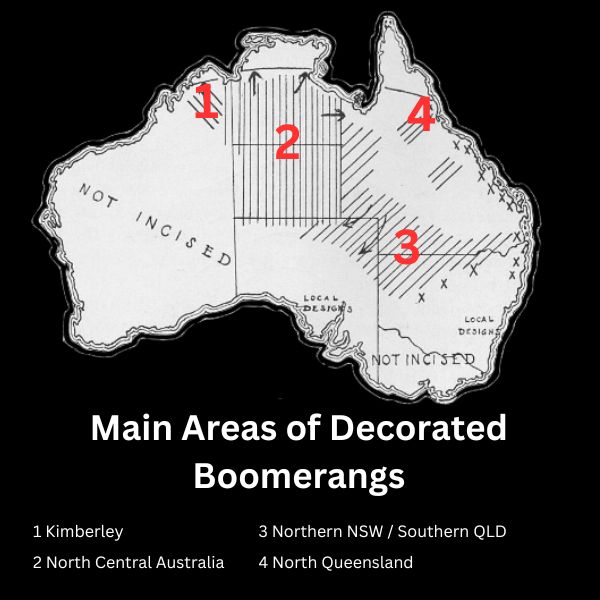
Kimberley Boomerang
Kimberley Boomerangs often have longitudinal fluting that follows the contours of the boomerang. Those from the Coastal region have one arm longer than the other. Inland Kimberley boomerangs tend to be symmetrical. They often have red ochre and white pipe clay stripes. Kimberley Boomerangs and Bardi shields were for inter-clan warfare.
The most collectable form of the Kimberley boomerang is incised with geometric designs and used for ceremonial purposes.
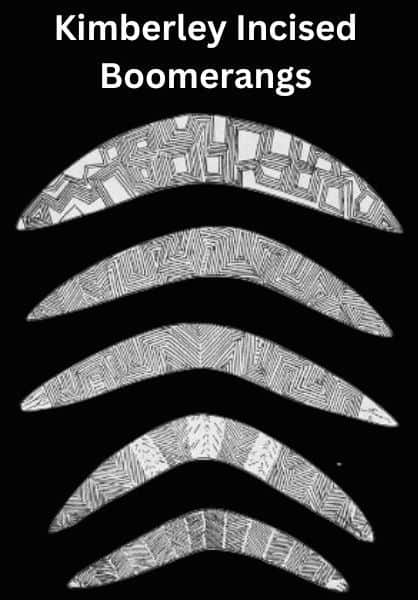
Right: 54cm – 90cm
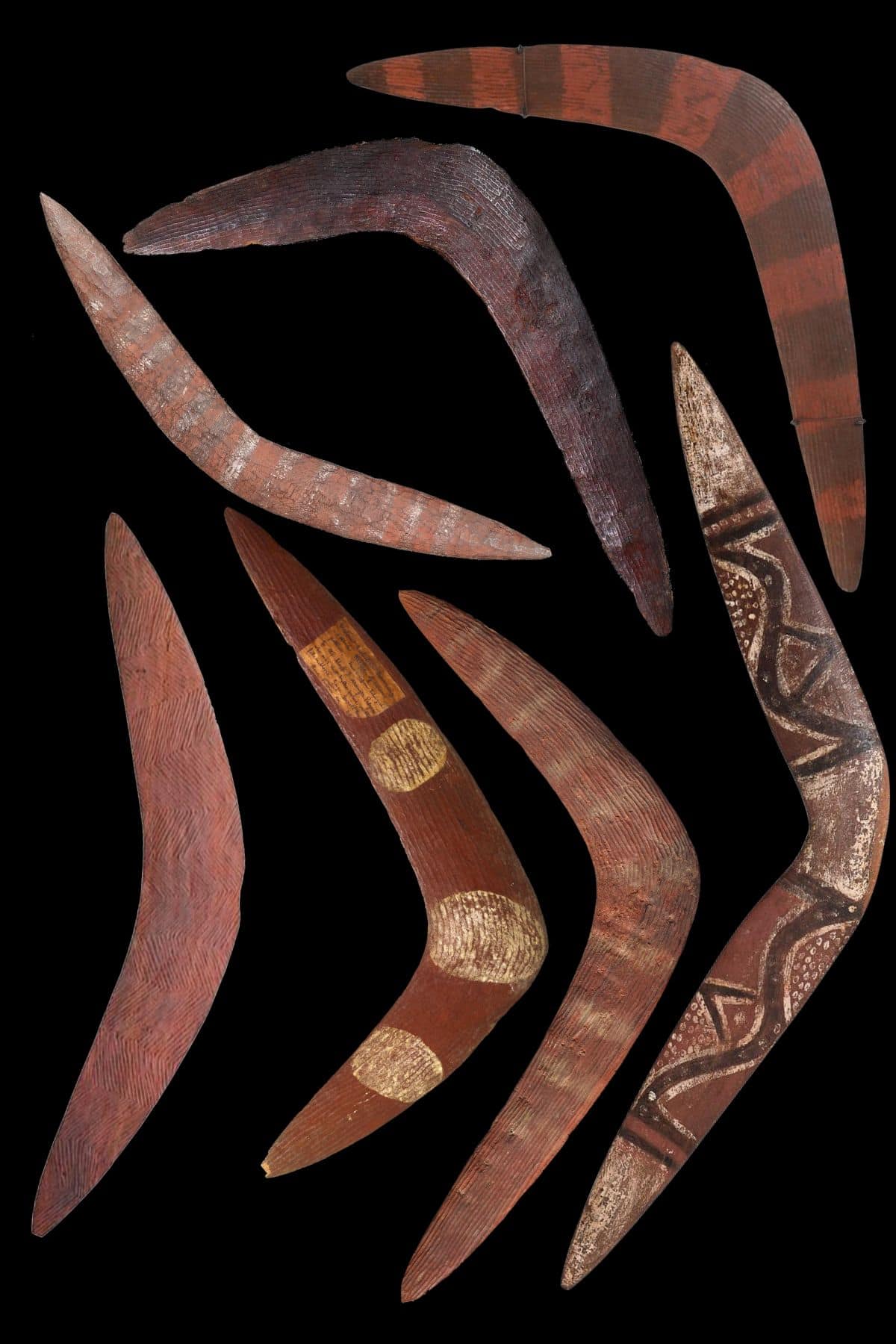
South Queensland Northern New South Wales Boomerangs
These boomerangs are popular with collectors because they are lovingly incised. There are two main types.
Long fighting boomerangs are like a club. They are thick because they don’t need to be aerodynamic and up to six feet long. These are to all intents and purposes an Aboriginal club. They are boomerang-shaped though and known as fighting boomerangs.
Smaller throwing boomerangs were also used in combat and tended to be flat on the bottom and concave on the top. Collectors value them for the designs. Pinched ends are also desirable.
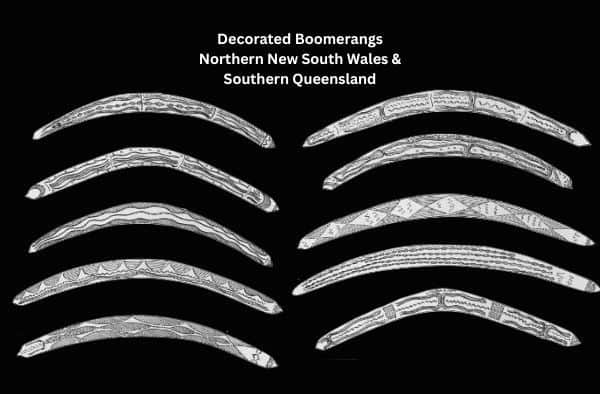
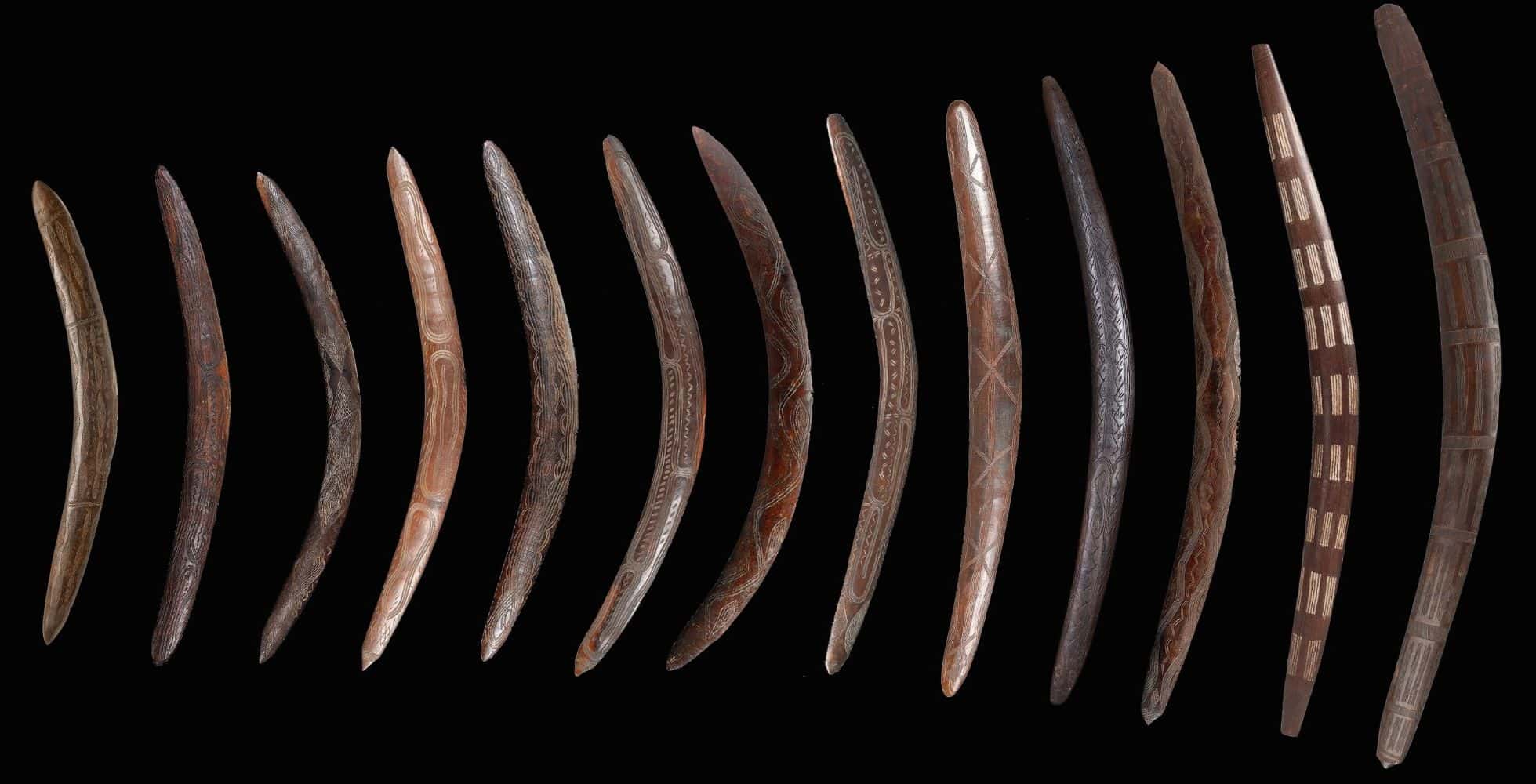
Incised boomerangs from Southern Queensland and northern New South Wales 58cm – 98 cm
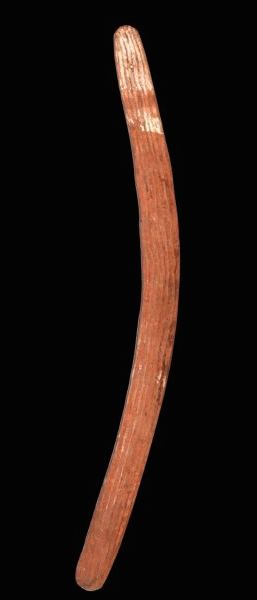
Northern Australian Ceremonial Boomerang
These boomerangs are quite common and do not vary much from the example shown. They often have longitudinal grooves and are convex on the top and flattish on the bottom. They are normally covered in red ochre. It is possible that the longitudinal grooves improve its aerodynamics in a similar way as dimples on a golf ball. The more collectable examples have tips decorated in traditional designs.
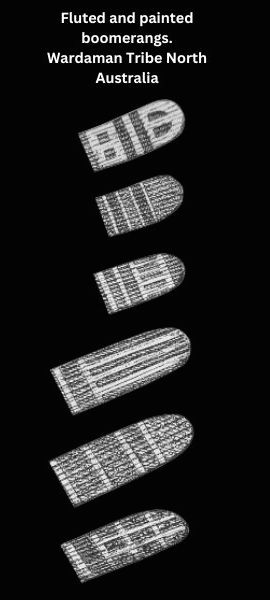
Northern Queensland Rainforest boomerangs
North Queensland boomerangs are brightly painted with designs like the shields from this region. The area around Cairns also has one of the rarest forms of boomerangs called a cross boomerang. Cross boomerangs were a child’s toy.
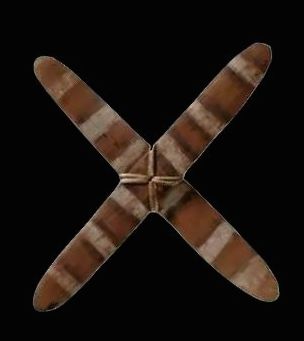
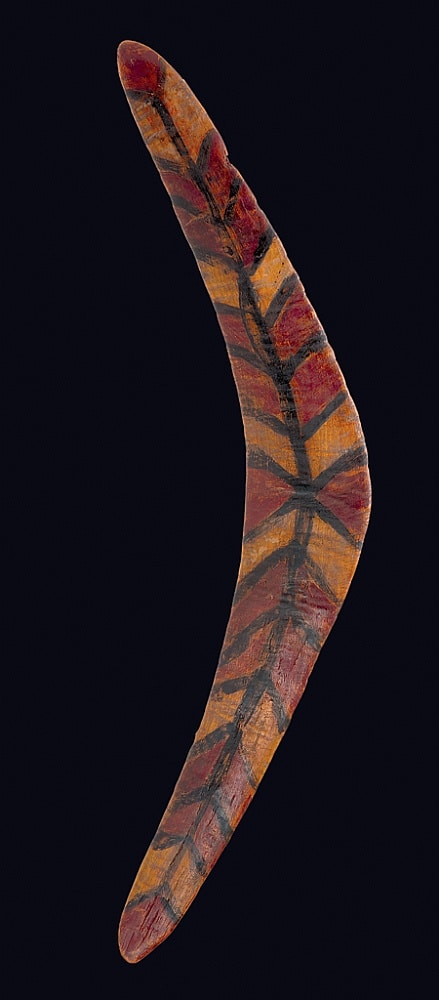
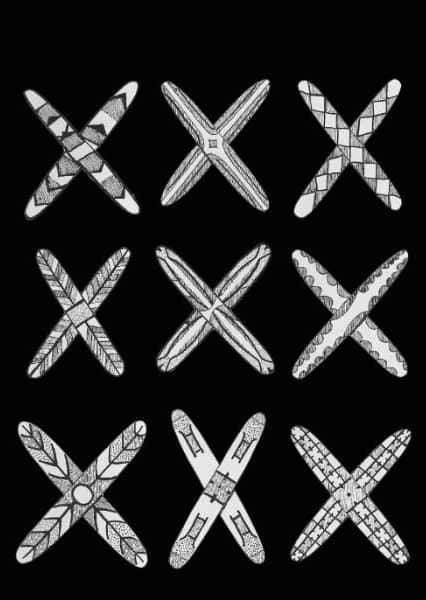
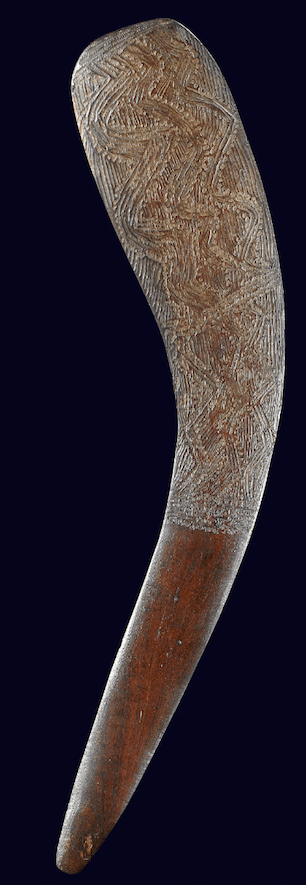
Kimberley Fishing Boomerang
Fishing Boomerangs are asymmetric longitudinally and symmetrical in cross-section. It is often undecorated and not ochred. They are often used in shallow tidal water to kill larger fish and other marine animals. Made from heavy woods or some late examples made of steel. It takes a strong throw to kill a fish even near the surface.The hunter would later retrieve the boomerang after the tide had gone out
Central Australian Fighting Boomerang
The central Australian Fighting boomerang is sometimes called a number 7 boomerang or a swan neck boomerang. The most collectable variety has a small notch at the top of the neck.
The design of this boomerang is for fighting. The protrusion will catch on the opponent’s shield and the long shaft whip around and inflict damage. These boomerangs were so sorted after that they also acted as a form of currency.
They are occasionally painted for ceremony.
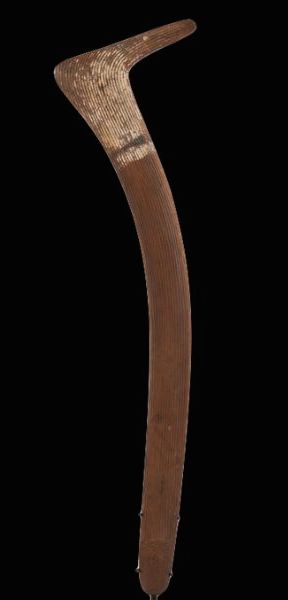
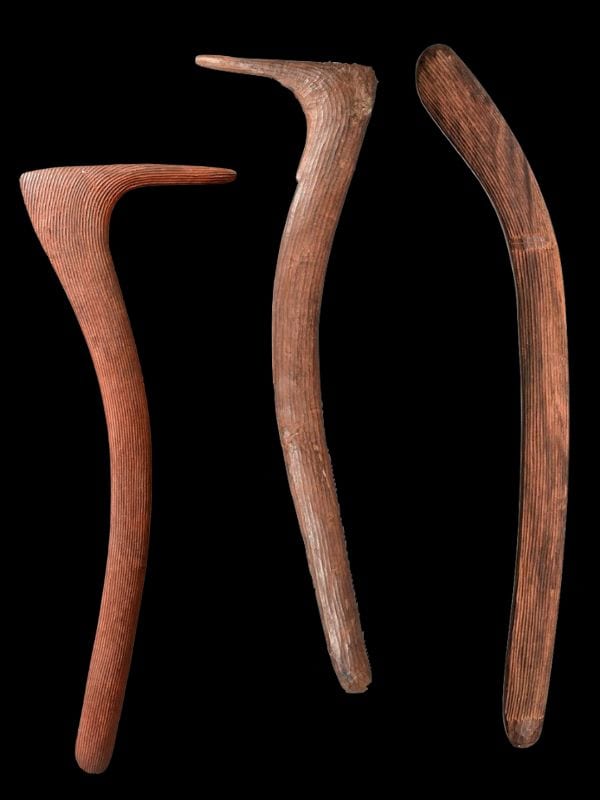
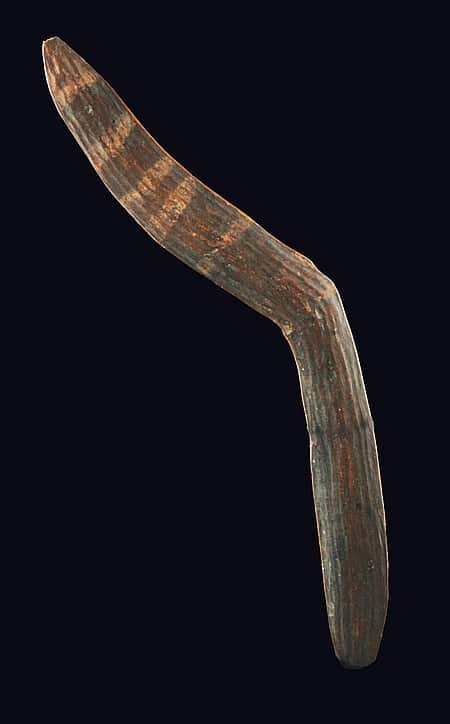
West Australian Boomerangs
West Australian Boomerangs lack decoration, with a thin blade and rounded ends. They are not highly sorted after by collectors but there are exceptions. The main exception is boomerangs from this region with one straight arm and the other with a concave twist.
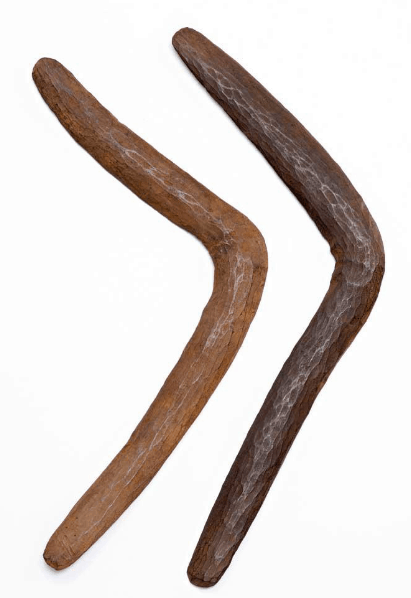
Mornington Island Aboriginal Boomerangs
Mornington island Boomerangs were not made for hunting or killing but for ceremonial dances. They were a prestige object and tend to be large and decorated with white pipe clay.
Because they were used mainly for dance ceremonies they are extremely thin in cross section.
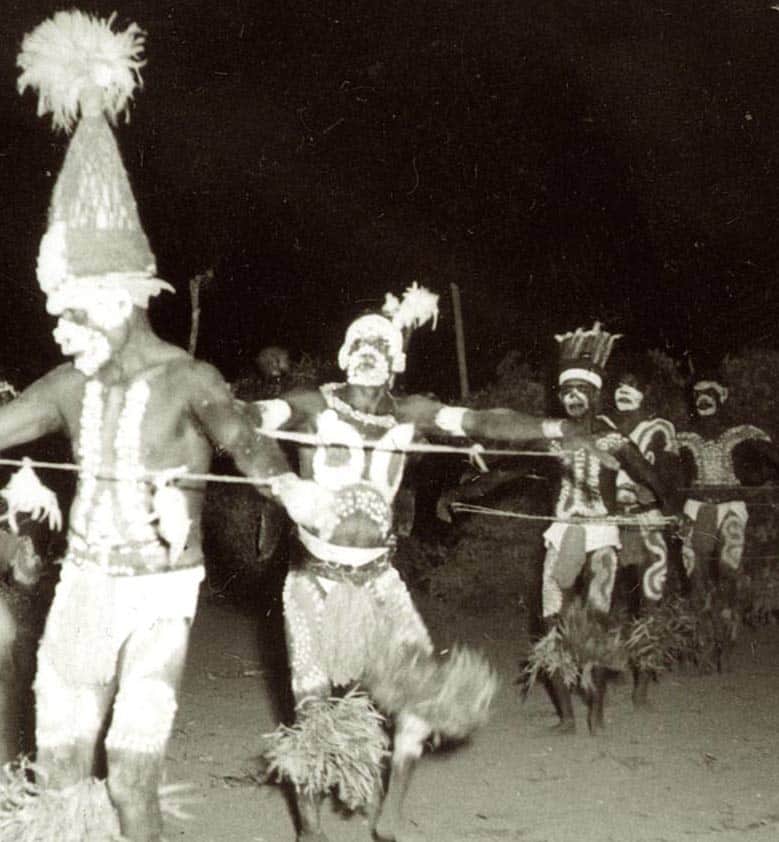
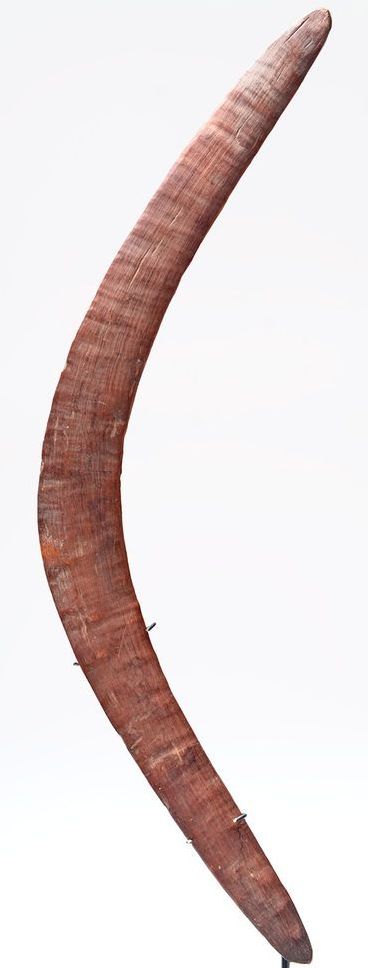
Central and Eastern Queensland Boomerangs
Boomerangs from this area are generally a crescent shape. They tend to be quite large averaging 90 cm long. They lack decoration or have only a few shallow incisions. Other than those from Mornington Island they are not painted.
Two main types of Boomerang come from this region. First of all small often steeply curved returning boomerangs used for hunting birds. These small boomerangs are plain and not ochred. The second type is fighting boomerangs. These were up to 90 cm and used to kill game or enemies. These are symmetrical longitudinally but convex on top and flatter on the bottom.
This area also has a form of a rare club called a Lil Lil club. Lil Lil clubs are boomerang-shaped and aerodynamic.
Lil Lil Club
Boomerang Shaped Clubs
Boomerang shaped Clubs
In general boomerangs are a projectile weapon and clubs are not thrown but there is an overlap. Some clubs were thrown and some boomerangs used as clubs.
Aboriginal clubs are covered in a seperate article but here are some aboriginal clubs that have boomerangs shapes,
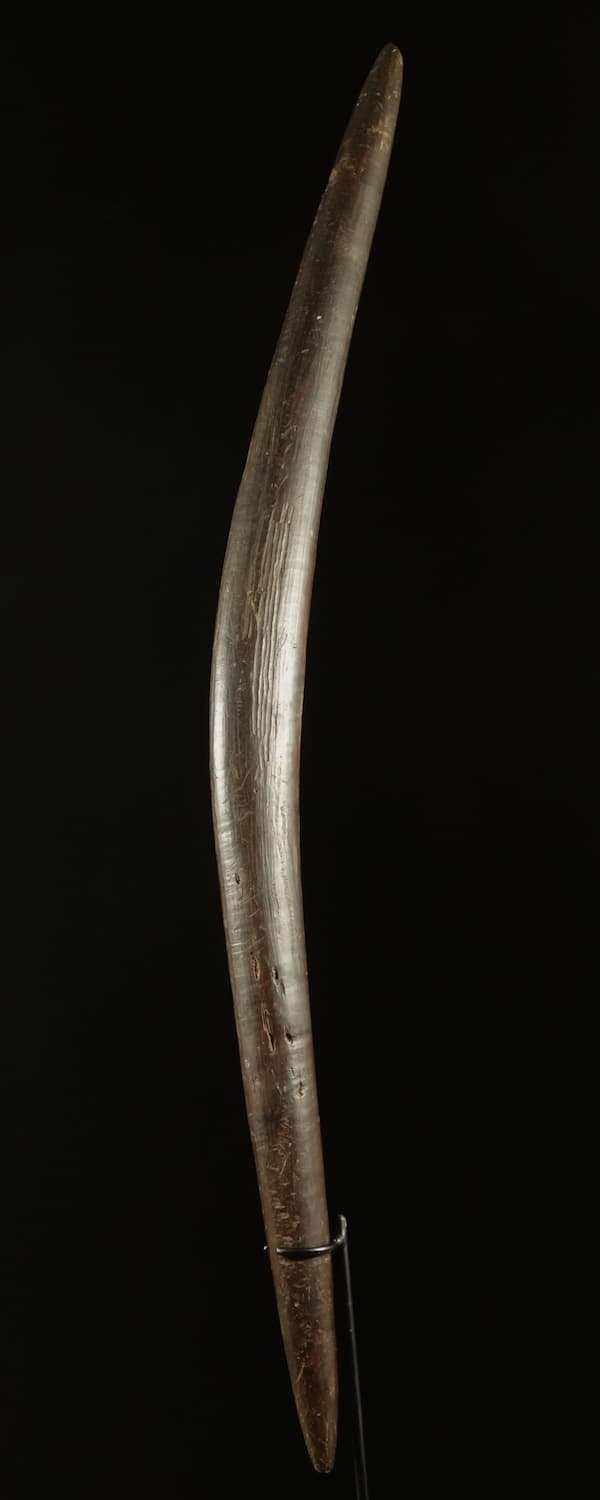

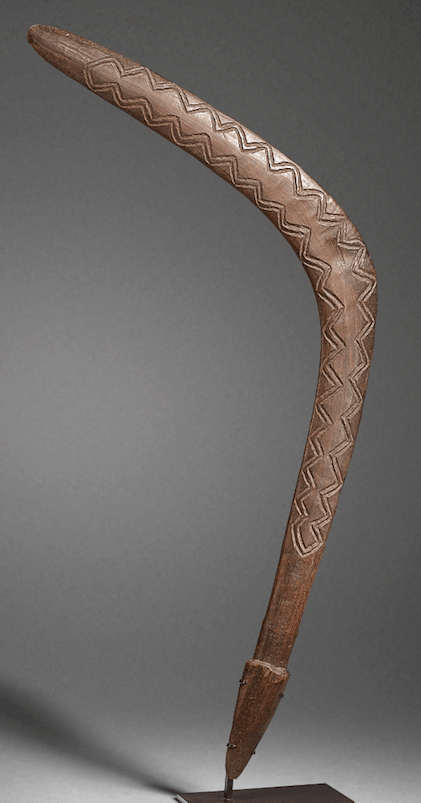
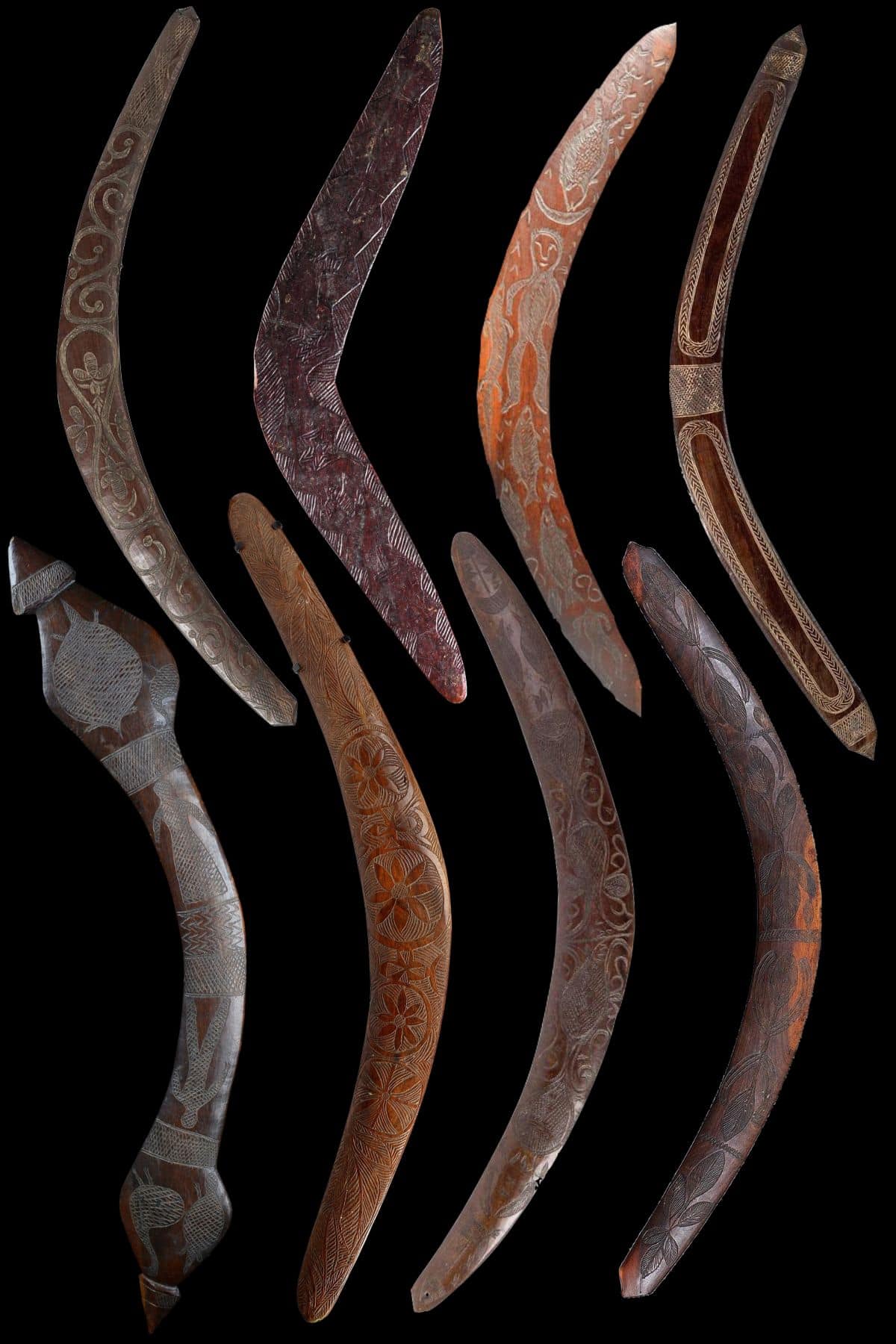
Transitional Aboriginal Boomerangs
All boomerangs are collectible but some are much more collectible than others. The most collectible boomerangs are the rarest, oldest authentic examples. Designs on the boomerang are often unique and are important.
Some transitional boomerangs though are of outstanding artistry and also collectable. These tend not to be the type with an emu and a kangaroo on them which are very common.
When used in ceremony boomerangs were often used in pairs. To have a pair of matched boomerangs is more desirable than a single item. Boomerangs that are at the extremes of their type are also sorted after. Collectors want the longest fighting boomerang or a returning boomerang with an extremely tight angle. Anything that is bizarre or unusual so long as it is old and authentic is a collector’s delight.
For more detailed information on Boomerangs please read Boomerang behind an Australian icon

Aboriginal Boomerang General information
Aboriginal boomerangs come in a large variety of sizes, forms, and decorations. Different boomerangs had different functions. This variation reflects the social and cultural diversity of Aboriginal people. Aboriginals were not one group but had over 200 language groups.
As mentioned most boomerangs were not made to return. The function of most boomerangs is to hit and kill whatever the hunter is aiming at. Some boomerangs were for hunting but others were for fighting. Some huge boomerangs were up to 2 meters long and function like clubs. The majority of aboriginal returning boomerangs were for hunting birds or as toys.
The Aboriginal boomerang has great aerodynamic properties. It is capable of going 200 meters compared to a throwing stick, which will only travel 60 meters.
Aboriginal Boomerangs could have engravings or painted designs in ochre for ceremonial purposes. These designs are not decorative. Designs relate to the Dreamtime ancestors and totems. Collectors like boomerangs with designs far more than simple chip carved examples.
The Aboriginal boomerang is also used as a digging tool, for making fire and as a club.
Collectors like boomerangs that are old, unique, and rare or have elaborate designs.
Boomerangs in other cultures
Boomerangs were also used in other non-aboriginal prehistoric societies. Rock paintings of boomerangs in North Africa date to 9,000 years ago. In Poland, archaeologists found a 23,000-year-old boomerang made of mammoth tusk. In fact, ancient boomerangs were in Germany, Vanuatu, Indonesia, India and the Hopi Indians in Arizona. What makes the Aboriginal boomerang unique is that it has continued to be useful until recent times. Aboriginal boomerangs have the greatest diversity of forms. Other cultures abandoned the boomerang after the invention of the bow and arrow.
Is it an Aboriginal Boomerang?
While a lightweight returning boomerang for hunting birds is seen next to a long sword Club from Queensland this is an easy question. As the diagram shows the transition from throwing club to flattened throwing club to boomerang is gradual. The transition from wooden hatchet to Lil Lil club to boomerang is equally gradual. In general, if it is flat and made to throw it is a Boomerang.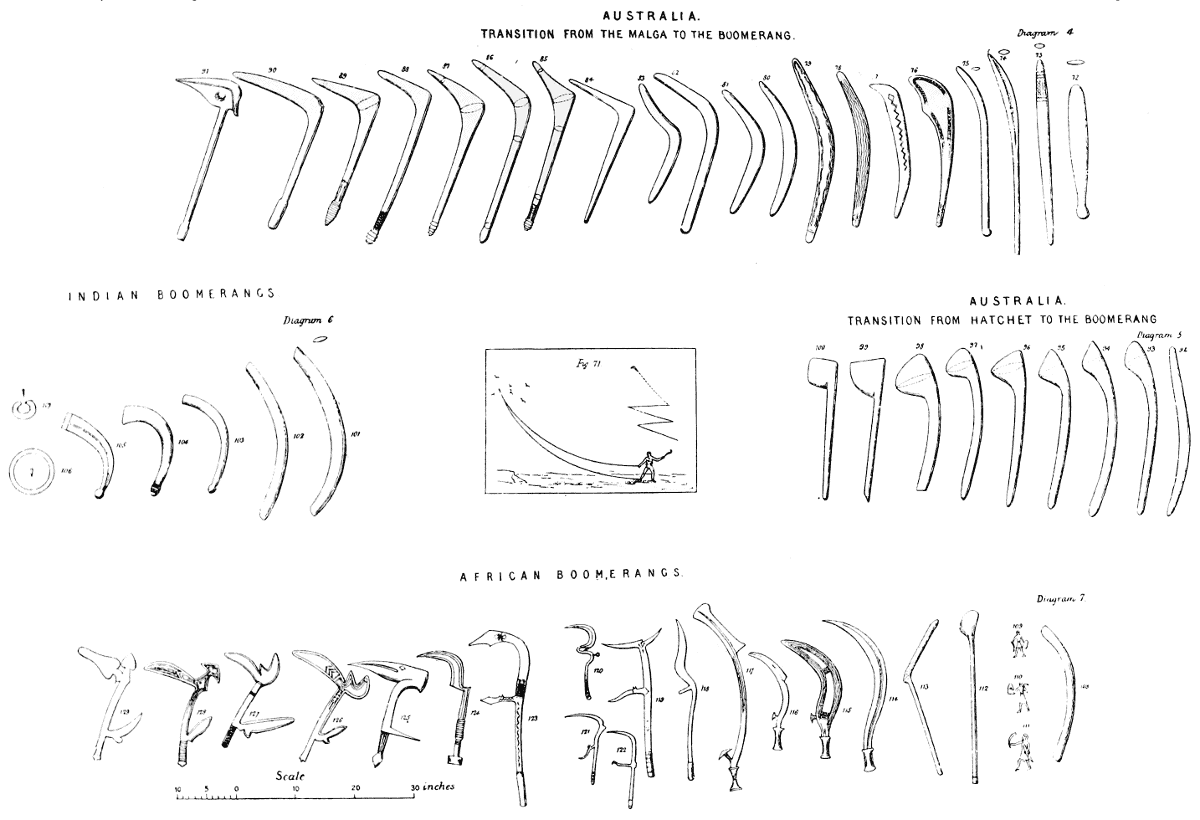
Boomerang facts
The Aboriginal boomerang is a projectile weapon used by aboriginals for fighting and hunting. A Boomerang can kill you. Used in warfare the high speed of the end of a rotating boomerang can puncture a skull or break bones leading to death. Aboriginal boomerangs were used for hunting game but also in warfare.
Aboriginal people did invent the boomerang but it is likely it was also invented independently by other cultures.
Boomerangs do not always come back. Only a few types of aboriginal boomerang actually return. Many types of boomerang were designed for a one-way flight and then hitting and killing. There are many different types of boomerangs include club boomerangs, hooked boomerangs, bossed boomerangs, sword boomerangs, pegged boomerangs, cross boomerangs and lil-lil boomerangs.
Boomerangs really do work. When thrown correctly a returning boomerang will return to the thrower. A boomerang comes back to you because the two or more wings spin to create unbalanced aerodynamic forces. These forces cause the boomerang’s path to curve in an elliptical shape. This allows the boomerang to return to the thrower if thrown correctly.
Aboriginal boomerangs are at least ten thousand years old. There is evidence that boomerangs are much older. In Poland, archaeologists found a 23,000-year-old boomerang made of mammoth tusk.
The aboriginal name for a boomerang was different in different language groups. The english word boomerang comes from the Dharug language for throwing stick.
Why is a boomerang curved?
A curved boomerang when thrown will rotate more swiftly than a straight boomerang. More Importantly, the rotation center of a straight boomerang is unstable. A flat, straight boomerang tends to rotate around its long axis, rapidly flipping itself over.
The boomerang curve itself does not make it fly. The boomerang flys due to the cross-section shape of its arms. The top surface is slightly convex while the underside is nearly flat. When a wing of this shape travels through the air it creates a pocket of low pressure above the wing and a pocket of high pressure below it. These forces respectively pull and push the wing-shaped arms upwards. If the airflow is fast enough the wing lifts and held in the current. In-flight, a boomerang is more like a helicopter than a plane. It isn’t how fast it travels through the air that matters but how fast the blades rotate.
A boomerang rotation is usually 8-11 times per second. Even if the forward motion of the boomerang slows down, the speed of rotation is often enough to hold it in the air. The spinning motion is vital to a boomerang’s performance. A Boomerang needs to have a curve to allow it to spin fast and be stable.
All images in this article are for educational purposes only.
This site may contain copyrighted material the use of which was not specified by the copyright owner.
